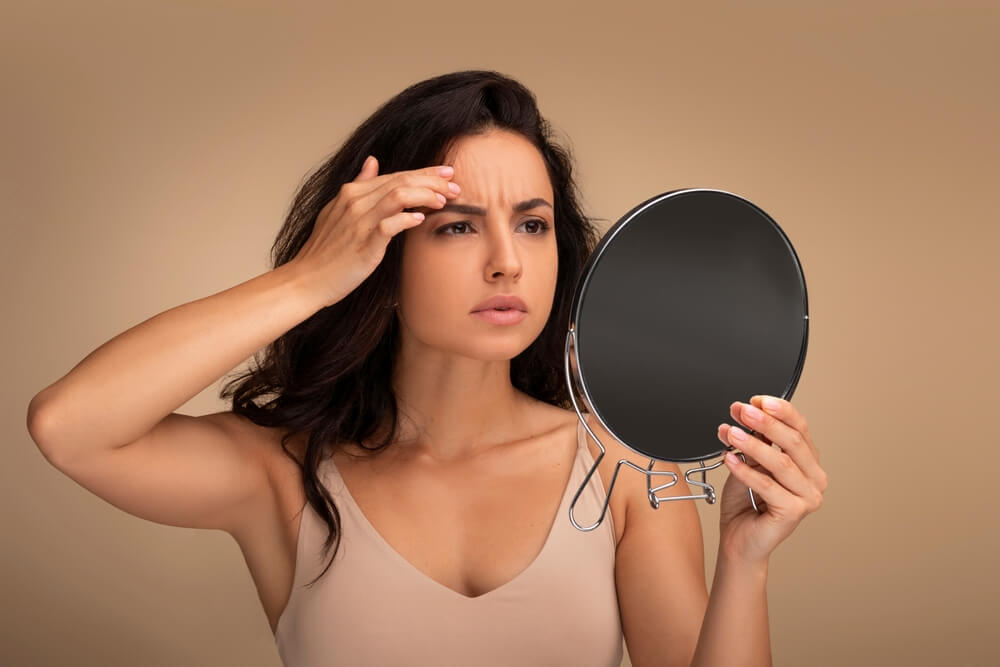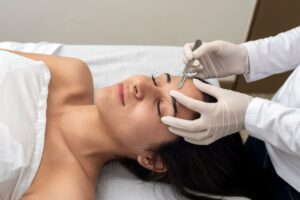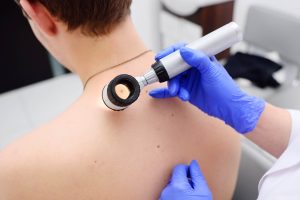It’s easy to focus on our skin just for its appearance. Do we like how we look or not?
But it goes much further than that. Skin functions as both a window to our health and also as a protector. Just as conditions inside the body can show up on our skin, if the skin itself is unhealthy (dry, wrinkled, damaged), it can translate that harm back into the body.
Given that November is National Healthy Skin Month, as designated by the American Academy of Dermatology since 1997, let’s take a deeper look at skin as a barometer of our health, as well as a protector of our health.
The Stories Your Skin Tells
Depending on who’s looking at your skin, it might tell a story that goes beyond the surface.
|
If a dermatologist sees… |
They would guess…. |
|
Wrinkles, spots, uneven pigmentation, and loss of elasticity |
You spend a lot of time outdoors without adequate sun protection. |
|
Droopy, saggy, dark circles under the eyes |
You’re not getting enough sleep. |
|
Sunken-looking skin around the eyes |
You’re not getting enough hydration. |
|
Pale or sallow skin, wrinkles around the lips |
You are or were a smoker. |
Those stories can turn from past history – you used to smoke, for example – to a future warning, as a somewhat scary but useful article from the American Academy of Dermatology shares.
Here are some common warnings that we sometimes miss or misinterpret. If you experience any of these, pay attention, and when in doubt, talk to a board-certified dermatologist to see if what’s on your skin’s surface is signaling a bigger issue.
Acne
We’ve shared tips and insights about acne – it’s much more common than we like to think! But beyond teenage breakouts, sometimes new or severe acne can signal hormonal abnormalities, like polycystic ovary syndrome (PCOS) in women.
Discolored skin
This is a tricky one. A change in skin color can signal many different underlying issues, from heart disease to diabetes.
For example, if your skin turns blue or purple – not related to being cold — it can be a sign that your circulation isn’t working. There’s actually a condition called “blue toe syndrome.” If you notice this change, talk to a doctor right away. Without the right amount of oxygen, tissue will die.
If you see a blue or purple net-like pattern (think of a fishing net), that can be a sign of blocked blood vessels.
If your skin turns darker and gets thicker, almost like velvet, especially on the back of your neck, armpit, or groin, your insulin levels could be too high, which is a sign of prediabetes.
Dry, itchy skin
If your skin is dry, your natural reaction is to put lotion on it. Maybe you shorten your showers (which is good!).
But sometimes dry skin isn’t about the winter weather or getting older. Diabetes, thyroid disorders, and lymphoma are conditions that can make the skin itch.
Rashes
Rashes are tricky. They can signal so many different issues. You might have brushed up against something or eaten something you’re allergic to. There could be an air pollutant causing a reaction, or maybe you started using a new skin product – or a new combination of products. The list is long!
Sometimes, though, rashes are a cry for help. Butterfly rashes on the face are linked to lupus. Lyme disease has a unique target-shaped rash. A rash that has a yellowish discharge could be a sign of an underlying infection. A bumpy rash that looks like little raised waxy dots can be related to high cholesterol levels or diabetes.
“Any of these can be a cause for concern,” says Caroline Tan, MD of The Menkes Clinic, a Golden State Dermatology Affiliate. “We all need to pay attention to our skin so we know what it normally looks like. Then we’ll be better prepared to catch any changes. We also want to stress that these signals can show up differently if you have darker skin. A rash might look purple instead of red. Come see a dermatologist instead of trying to guess – we’ve seen hundreds if not thousands of cases.”
Your Skin as a Protector…or Pass-through
Newer research, as of 2000, shows that the skin not only signals what’s going on inside the body, but it can also be the cause of health problems.
As we all know (even if we don’t act on it!), the sun’s rays cause damage. The UVA portion of the sun’s rays has a longer wavelength than UVB rays. That means it can go deeper into the skin, hampering collagen production and stimulating the cells to produce melanin. So that “golden glow” is really like a bruise – it’s a sign of injury.
That damaged skin then becomes a pass-through mechanism for inflammatory chemicals that get released into the bloodstream, causing internal harm. As described in this BBC article, aged or diseased skin has been linked to “cardiovascular disease, type 2 diabetes and cognitive impairment, as well as Alzheimer’s and Parkinson’s disease.”
“It turns out that staying out of the sun and keeping your skin moisturized isn’t just about preventing wrinkles,” says Dr. Tan. “You need to keep your skin healthy both for its own sake as well as for the protective role it plays for your whole body. Think of the sun and the environment like angry bees. If you had to walk through a swarm of those, would you want a net to protect you, or a fully enclosed vehicle? When it comes to your skin, you want all the protection you can get.”







